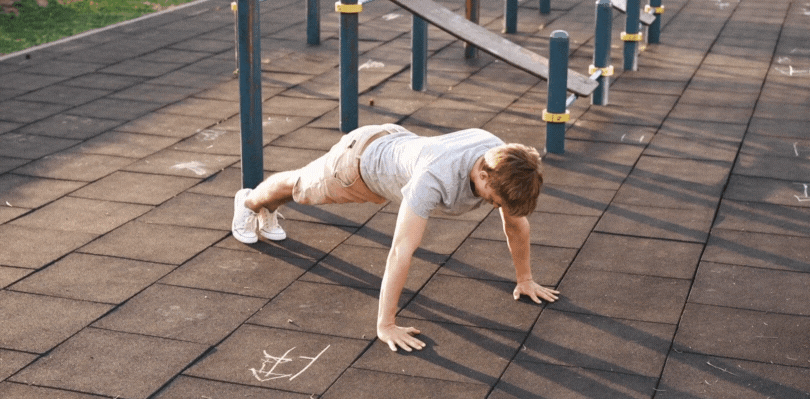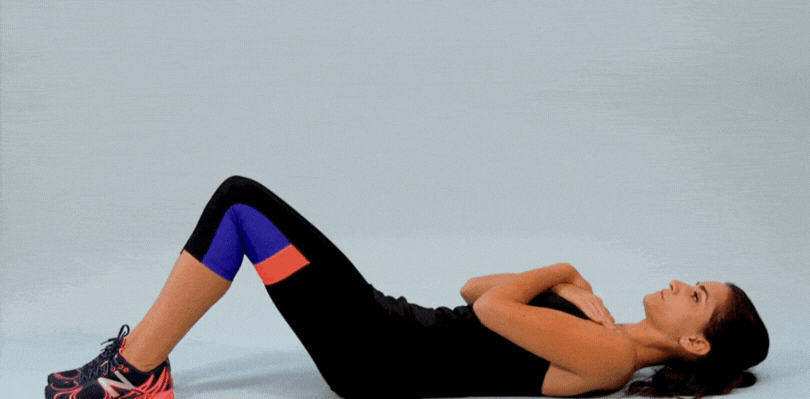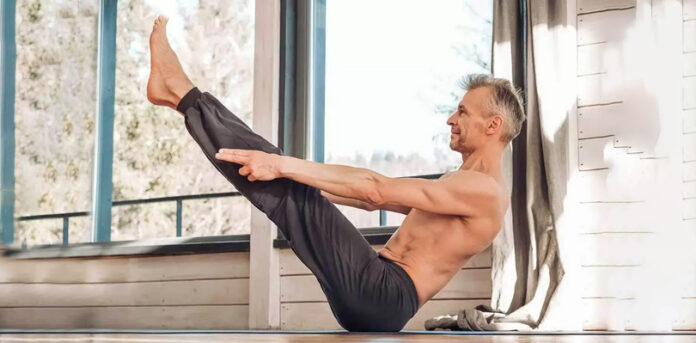Are you a senior looking to maintain your fitness and overall health? Look no further than Calisthenics for Seniors! As we age, staying active becomes increasingly important, but high-intensity workouts may not be suitable for everyone. Fortunately, calisthenics exercises are a low-impact, effective way for seniors to maintain strength, flexibility, and balance, all while reducing the risk of chronic diseases.
Calisthenics, which are bodyweight exercises that use minimal equipment, can be a great option for seniors to maintain strength, flexibility, and balance. Calisthenics exercises for seniors are effective, beneficial for overall health, and reduce the risk of chronic diseases. They are also low-impact and less likely to cause injury. Seniors should start with low-intensity exercises and gradually increase intensity and duration over time.
Calisthenics For Seniors Best For 50-Year-Old And Above
Calisthenics, also known as bodyweight training, is a series of exercises that use one’s own body weight as resistance to build strength, endurance, and flexibility. It is a low-impact and low-risk form of exercise, making them ideal for seniors who may have joint pain, limited mobility, or other health concerns. Here are some of the best calisthenics exercises for seniors over 50:
Squats

Squats are a great way to build lower body strength and improve balance. To perform a squat, stand with your feet hip-width apart, toes pointing forward. Slowly bend your knees and lower your hips towards the ground, keeping your back straight and your weight in your heels. Pause for a moment and then slowly stand back up.
Push-Ups

Push-ups are an excellent way to build upper body strength and increase bone density. To perform a push-up, start in a plank position with your hands shoulder-width apart. Lower your body towards the ground, keeping your elbows close to your body, and then push back up to the starting position.
Planks

Planks are a great exercise for building core strength and improving posture. To perform a plank, start in a push-up position and then lower your body onto your forearms. Keep your body straight and hold the position for as long as you can.
Lunges

Lunges are a great way to build lower body strength and improve balance. To perform a lunge, step forward with one foot and lower your body towards the ground, keeping your knee directly over your ankle. Push back up to the starting position and repeat with the other leg.
Sit-Ups

Sit-ups are an effective way to build core strength and improve flexibility. To perform a sit-up, lie on your back with your knees bent and your feet flat on the ground. Cross your arms over your chest and then slowly sit up, keeping your back straight and your chin tucked in. Slowly lower yourself back down to the starting position.
It’s also important to consult a doctor before starting any new exercise routine, especially if you have any underlying health conditions or concerns. With the right mindset, dedication, and guidance, calisthenics can be an excellent way for seniors over 50 to stay active and maintain their strength and mobility.
Benefits Of Doing Calisthenics For Seniors
Calisthenics is an excellent form of exercise for seniors, offering a wide range of benefits for overall health and well-being. Here are some of the benefits of doing calisthenics for seniors:
Improves Strength And Muscle Tone
Calisthenics exercises use the body’s weight as resistance, which helps to build strength and muscle tone. This is especially important for seniors, who may experience age-related muscle loss, also known as sarcopenia.
Increases Bone Density
Calisthenics exercises, such as push-ups and squats, are weight-bearing exercises that help to increase bone density. This is important for seniors, who may be at a higher risk of developing osteoporosis.
Improves Balance And Coordination
Many calisthenics exercises, such as lunges and planks, require balance and coordination, which can help to improve these skills. This is important for seniors, who may be at a higher risk of falls and injuries.
Enhances Flexibility
Calisthenics exercises can help to improve flexibility and range of motion, which can be especially important for seniors who may experience joint stiffness and reduced mobility.
Boosts Cardiovascular Health
Calisthenics exercises, such as jumping jacks and burpees, can help to improve cardiovascular health and reduce the risk of heart disease and stroke.
Reduces Stress
Exercise is a natural stress reliever, and calisthenics is no exception. Regular exercise can help to reduce stress and anxiety, improving overall mental health and well-being.
Low-Impact
Calisthenics exercises are generally low-impact, meaning they are easier on the joints and less likely to cause injury than high-impact exercises, such as running or jumping.
In addition to these physical and mental benefits, calisthenics exercises can be performed anywhere, without the need for expensive equipment or gym memberships. This makes them an accessible and affordable form of exercise for seniors. Overall, calisthenics can be an effective and enjoyable way for seniors to improve their health, mobility, and overall quality of life.
How Old Is Too Old For Calisthenics For Seniors
There is no specific age at which seniors are too old for calisthenics. It depends on a variety of factors, including an individual’s overall health, mobility, and fitness level. Seniors with underlying health conditions or mobility issues may need to modify their exercises or work with a physical therapist to develop a safe and effective routine.
It’s important to consult with a doctor or healthcare professional before starting any new exercise routine, especially if you have any concerns about your health or mobility. With the right guidance and support, many seniors can safely and effectively incorporate calisthenics into their exercise routine to improve their strength, flexibility, and overall health.
Tips And Techniques To Do Calisthenics For Seniors
Calisthenics can be a great form of exercise for seniors, but it’s important to approach them with the right mindset and techniques to ensure safety and effectiveness. Here are five tips and techniques for seniors looking to start a calisthenics routine:
Start Slow And Gradually Increase The Intensity
It’s important to start with low-intensity exercises and gradually increase the intensity over time. This will help to reduce the risk of injury and ensure that you are able to build strength and endurance safely.
Focus On Proper Form
Proper form is essential for safe and effective calisthenics exercises. Make sure to pay attention to your posture, alignment, and movement patterns to ensure that you are performing the exercises correctly.
Listen To Your Body
It’s important to listen to your body and take breaks as needed. If you experience pain or discomfort during an exercise, stop immediately and consult with a doctor or physical therapist.
Incorporate Stretching And Warm-Up Exercises
Stretching and warm-up exercises can help to improve flexibility, reduce the risk of injury, and prepare your body for the exercises ahead. Make sure to incorporate these into your calisthenics routine.
Get Guidance And Support
If you’re new to calisthenics or have any underlying health conditions, it’s important to get guidance and support from a qualified fitness professional or physical therapist. They can help you develop a safe and effective routine and provide modifications as needed.
Overall, calisthenics can be a great way for seniors to improve their strength, flexibility, and overall health. With the right mindset, techniques, and support, seniors can safely and effectively incorporate calisthenics into their exercise routines.
FAQs
Is calisthenics suitable for seniors with limited mobility?
Calisthenics can be adapted to suit seniors with limited mobility. For example, exercises can be performed seated, with a chair for support, or with the use of resistance bands to reduce the load on joints. It’s important to work with a qualified fitness professional or physical therapist to ensure that exercises are adapted safely and effectively.
How often should seniors do calisthenics?
Seniors should aim to do calisthenics exercises at least two to three times a week. It’s important to include a variety of exercises that target different muscle groups and to gradually increase the intensity over time. It’s also important to listen to your body and take breaks as needed.
Yes, calisthenics can be beneficial for seniors with age-related health conditions. For example, calisthenics exercises can help to improve bone density, reduce the risk of falls, and improve cardiovascular health. It’s important to consult with a doctor or physical therapist before starting any new exercise routine, especially if you have an underlying health condition. They can help you develop a safe and effective exercise plan that is tailored to your individual needs.

